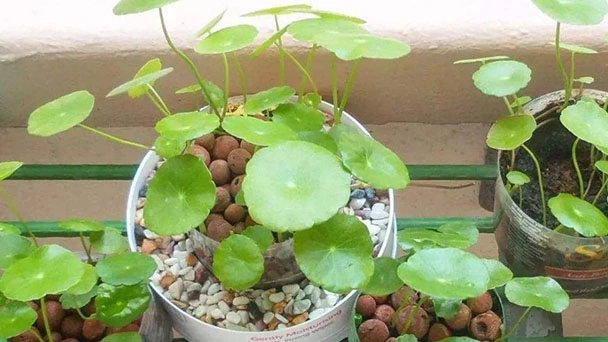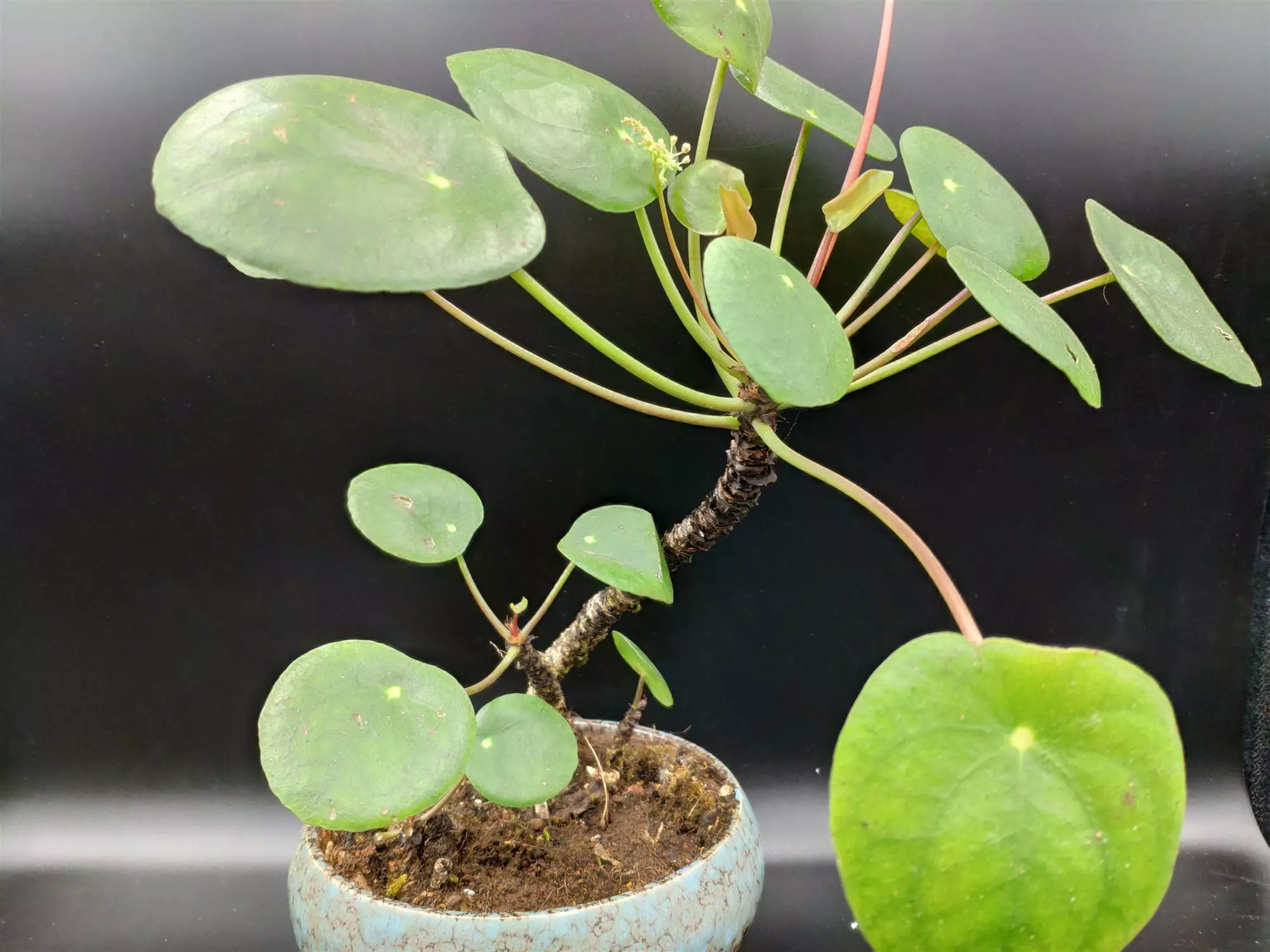Why Does My Pilea Peperomioides Leaves Curling?
Written by Ivy
Dec 29 2021

Pilea peperomioides is a very common potted plant. Because of its lovely shape, it is loved by many friends. Pilea peperomioides is cold resistant and likes a cool environment. The growth temperature is about 15 ℃. However, many flower friends found that the leaves of Pilea peperomioides curled when maintaining Pilea peperomioides. Here are several reasons and solutions for the curling of Pilea peperomioides leaves.
Read More:
What Is The Best Soil For Pilea Peperomioides?
How To Water My Pilea Peperomioides?
In addition to proper shading in summer, full sunshine maintenance can be carried out in spring, autumn and winter. If photosynthesis is strong and leaves are naturally shiny, leaves curling will not occur.
Read More:
How Much Light Does Pilea Peperomioides Need?
Solution: when the temperature is too low in winter, we should move the Pilea peperomioides to a place with slightly higher room temperature, preferably at about 15 ℃ to maintain the normal growth of plants. Don't put it directly in the strong sun in summer.
The stems and leaves of Pilea peperomioides are fleshy and are not resistant to concentrated fertilizer and large fertilizer. It should be carried out in a small amount for many times. It is most suitable to irrigate with thin fertilizer and water. Thin liquid fertilizer shall be applied once every half month in the growing season. Throughout the spring and summer, the growth period of Pilea Peperomioides is strong. We should strengthen the management of fertilizer and water.
Underwatering
Pilea peperomioides is a water loving plant. It likes to moisten the roots and leaves with enough water. Only when the water is enough can the leaves shine and reflect your figure like a mirror. Watering should be dry and wet. Always keep the basin soil moist, but avoid ponding, so as to prevent leaf discoloration, curling and even stem rot. During the whole growth period, the basin is mainly kept wet. It can be relatively dry in winter, but there shall be no drying phenomenon, otherwise the leaves are easy to dry and black. In dry seasons, water is often sprayed on the leaf surface and around to maintain air humidity, resulting in a humid environment.Read More:
What Is The Best Soil For Pilea Peperomioides?
How To Water My Pilea Peperomioides?
Light Stress
The leaves of Pilea peperomioides are darker because they are rich in chlorophyll. However, if there is not enough sunlight for photosynthesis, the color of the leaves will turn light green or even gray, which may lead to the curling of the leaf edges to the back.In addition to proper shading in summer, full sunshine maintenance can be carried out in spring, autumn and winter. If photosynthesis is strong and leaves are naturally shiny, leaves curling will not occur.
Read More:
How Much Light Does Pilea Peperomioides Need?
Temperature Problems
The suitable growth temperature of Pilea peperomioides is 15-20 ℃, and it should be kept above 7 ℃ for overwintering, otherwise it is easy to fall leaves or even die of freezing injury. When the temperature is higher than 30 ℃ in summer, the growth will stagnate and the leaves are easy to fall off. Therefore, if the temperature is too low or too high, it is also easy to cause curling and wrinkling of Pilea peperomioides leaves.Solution: when the temperature is too low in winter, we should move the Pilea peperomioides to a place with slightly higher room temperature, preferably at about 15 ℃ to maintain the normal growth of plants. Don't put it directly in the strong sun in summer.

Nutrient Deficiency
Although it is not suitable to apply nitrogen fertilizer, it is necessary to apply phosphorus and potassium fertilizer. If you don't apply fertilizer for a long time, the plant is malnourished, the leaves are curly, wrinkled, and can't eat enough, how can they shine? However, excessive nitrogen fertilizer will cause leaf overgrowth and plant lodging, and concentrated fertilizer and raw fertilizer will cause plant root rot or even death. Fertilization shall be stopped when the temperature is higher than 28 ℃ or lower than 12 ℃.The stems and leaves of Pilea peperomioides are fleshy and are not resistant to concentrated fertilizer and large fertilizer. It should be carried out in a small amount for many times. It is most suitable to irrigate with thin fertilizer and water. Thin liquid fertilizer shall be applied once every half month in the growing season. Throughout the spring and summer, the growth period of Pilea Peperomioides is strong. We should strengthen the management of fertilizer and water.
Disease
Pilea peperomiedes leaves curling may also have given birth to scale insects. After discovery, you need to save it at the first time. You can find a clean soft brush and carefully brush off these small insects. Sometimes the number of insect pests is relatively large, so it is necessary to spray the pesticide in time. It can be sprayed with phosphorus and wax scale spirit. At the same time, a suitable growth environment should be provided for Pilea peperomioides, which can not be raised in a high temperature environment.Latest Updated
- Benefits of Bugleweed - 7 Science-backed Health Benefits
- Bugleweed Dangers & Side Effects - Is It Poisonous?
- How to Plant Evergreen Trees - What You Should Know
- When to Plant Evergreens - Grow Guide for Evergreen Trees
- 12 Wonderful Evergreen Shrubs for Your Garden
- 12 Popular Evergreen Plants with Pictures for Beginners
- When And How To Prune A Lilac Bush Like a Pro
- How to Grow & Care for Lilac Vine (Hardenbergia Violacea)
- Japanese Lilac Tree (Syringa Reticulata) Care & Propagation Guide
- Shumard Oak Pros and Cons - What to Know
Popular Articles
- Winter maintenance of Antirrhinum Majus
- How to Grow Terminalia Mantaly Tree
- How to Grow and Care for Crossostephium Chinense
- How to grow Antirrhinum Majus in spring
- Peristeria Elata (Dove Orchid) Profile: Info & Care Guide
- Underwatered Snake Plant (Sansevieria Trifasciata) - Signs And How To Fix
- How to Care for Brazilian Jasmine Plant (Mandevilla Sanderi)
- How to Grow & Care for Graptopetalum Purple Delight in Summer
- Rosa Chinensis (China Rose): Plant Growing & Care Tips
- How to Care for Baby Sun Rose (Aptenia Cordifolia)